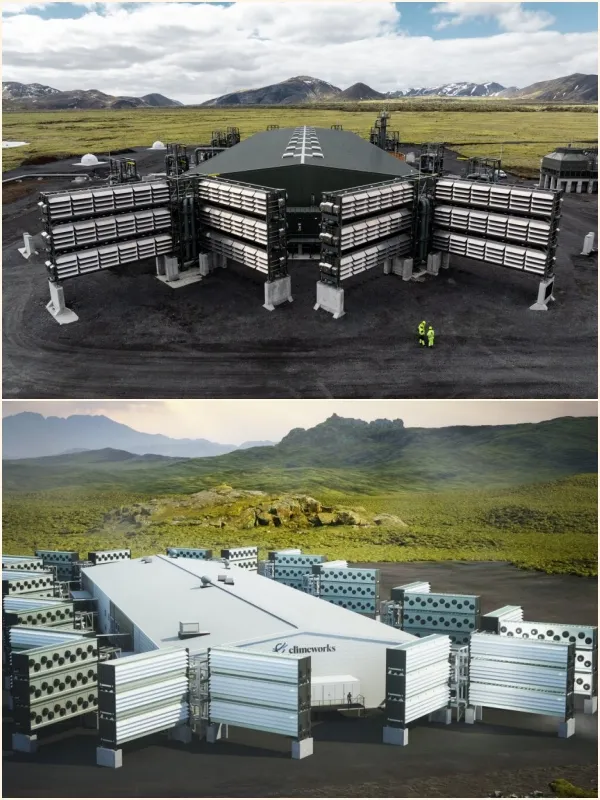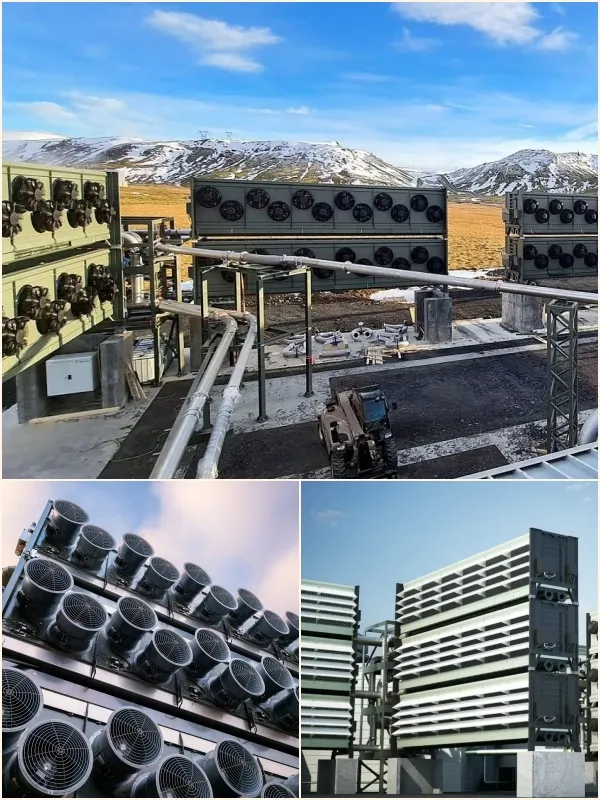
A groundbreaking development in climate technology has taken place in Iceland. On Wednesday, Climeworks inaugurated what is claimed to be the “world’s largest” direct air capture (DAC) plant, aptly named “Mammoth.” This monumental facility is a significant leap forward in the fight against climate change, being ten times larger than its predecessor, Orca, which began operations in 2021.

What is Direct Air Capture (DAC)?
Direct Air Capture (DAC) is a revolutionary technology designed to address the escalating levels of carbon dioxide (CO2) in our atmosphere. The process involves large machines that capture air and extract carbon using specialized chemicals. Once captured, the CO2 can be either injected deep underground, repurposed, or converted into solid products.
How Does Mammoth Work?
Mammoth, developed by the Swiss company Climeworks, represents a significant advancement in DAC technology. The plant boasts a modular design featuring 72 “collector containers,” which are the core components responsible for filtering CO2 from the air. Currently, 12 of these containers are operational, with plans to add more in the coming months.
At full capacity, Mammoth is expected to capture 36,000 tons of carbon annually, which is roughly equivalent to removing 7,800 gas-powered cars from the road for a year. This ambitious project is powered entirely by Iceland’s clean, renewable geothermal energy, enhancing its environmental benefits.

Carbon Sequestration and Storage
Climeworks has partnered with Icelandic firm Carbfix to manage the captured CO2 through a process known as sequestration. The carbon is transported underground where it undergoes natural transformation into stone, effectively locking it away permanently. This method aims to provide a long-term solution to carbon storage, reducing the impact on the atmosphere.
Challenges and Criticisms
Despite its innovative approach, DAC technology, including Mammoth, faces several challenges. Critics argue that DAC is expensive and energy-intensive, with costs currently around $1,000 per ton of carbon captured. Climeworks aims to reduce this cost to $300-$350 per ton by 2030 and eventually $100 per ton by 2050.
Some experts, like Lili Fuhr from the Center for International Environmental Law, express concerns about the uncertainties and ecological risks associated with DAC. Additionally, there is debate over whether such technologies might divert attention and resources from essential fossil fuel reduction policies.

The Road Ahead
Climeworks’ Mammoth plant is a significant milestone, but it represents only a small fraction of what is needed globally. According to the International Energy Agency, current carbon removal technologies can only manage approximately 0.01 million metric tons of CO2 annually, while the target is 70 million tons per year by 2030 to meet climate goals.
Other companies are also advancing in this space. For instance, Occidental’s Stratos plant in Texas, currently under construction, is designed to capture 500,000 tons of CO2 per year. However, concerns have been raised about the use of captured carbon in enhanced oil recovery, which could potentially prolong fossil fuel extraction.
Climeworks’ Ambitions
Climeworks remains optimistic about the future of DAC technology. The company’s co-founder and co-CEO, Jan Wurzbacher, envisions scaling up operations to remove 1 million tons of carbon annually by 2030 and 1 billion tons by 2050. Future plans include potential DAC plants in Kenya and the United States, signaling a global expansion of this promising technology.
While the Mammoth plant represents a significant leap forward in carbon capture, the journey to effectively combat climate change continues. The successful scaling and integration of DAC technology, alongside comprehensive climate policies, will be crucial in achieving global environmental goals.






